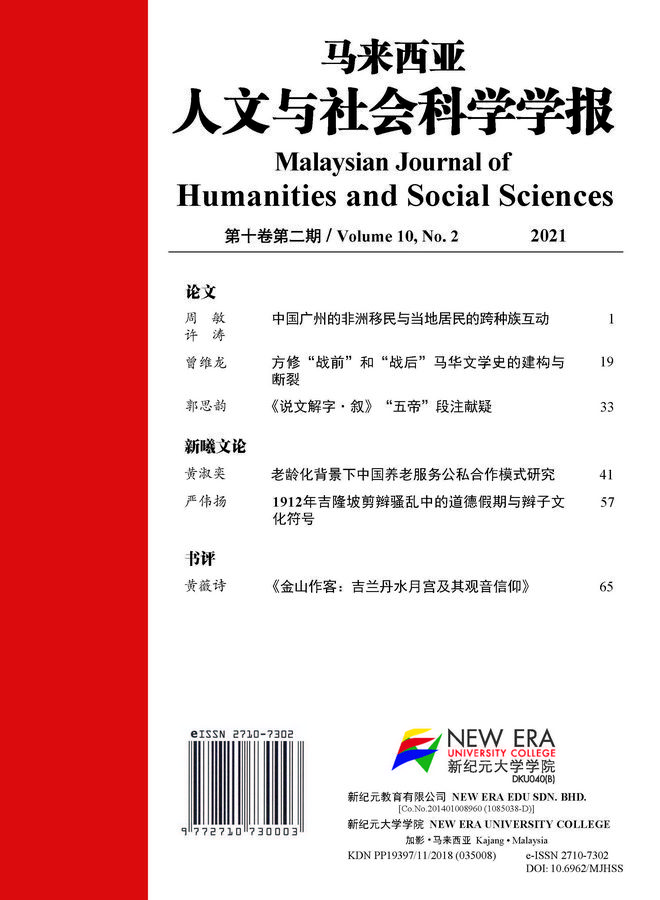老龄化背景下中国养老服务公私合作模式研究 A Study on Public Private Partnership (PPP) model in China Social Elder Care Services
Keywords:
PPP、养老服务、社会养老、公私合作, PPP, Public-Private Partnership, Social Elder Care, Elder Care ServicesAbstract
在老龄化背景下,随着中国社会快速发展以及家庭结构的变化,特别是“421”的家庭结构带来沉重的老年人养老负担,家庭养老功能逐渐弱化而转向依赖社会化养老服务。中国社会养老服务体系发展至今,依然存在巨大的供需不均衡状况。许多研究显示,政府是无法独立承担庞大的养老成本,仅靠政府财政支出与人力资源更难以构建完善的养老体系。如何推动养老产业多元化、多样化发展,实现“老有所依、老有所乐、老有所安”成了中国政府必须要解决的社会问题。为了建立有效养老服务体系,公私合作伙伴关系是一种被多国常用的机制之一,强调政府通过引入社会资本或社会力量的参与,建立互利共赢、风险分摊、相互监督的良好合作关系,以改善社会养老服务体系的发展。因此,本文试图以公私合作伙伴视角,提出三个经典案例(一院两制、BOT、BOO)进一步探讨中国政府如何透过提升社会参与从而达到养老服务的有效供给。研究发现,一院两制是在特殊情况下,促进公立机构效率改革,并且在原有的基础上衍生出一种新型的公私合作模式。整体上来说,养老机构的公私合作既能够提高养老机构发展的活力,吸引社会资本参与到养老服务的提供中,同时又能分担经营风险,在保证社会资本方适度获利的情况下达到提供养老服务的社会目的。
In the context of aging, the rapid development of Chinese society and the changes in the family structure, especially in the structure of “421” model families, a heavy burden has been brought on the elder care system. The family elder care function has been gradually weakening and is now more reliant on the social elder care services. Since the beginning of development there is still a huge imbalance between supply and demand in the Chinese social elder care system. Many studies have shown that the government is unable to bear all the costs of the social elder care system on its own. Relying solely on governmental financial expenditures and human resources will make it difficult to build a well-operating elder care system. How to diversify the development of the elder care system of China, and achieve the goal of “old people have somebody to rely on, spend time with and are secured” has become a social problem that the Chinese government has to solve. Public-private partnership (PPP) is one of the mechanisms commonly used in many countries to establish an effective elder care system. It emphasizes that by introducing social capital or social forces, the government establishes a mutually beneficial, risk sharing, and mutually supervising cooperation which is aimed at the development and improvement of the social elder care system. Therefore, from the perspective of PPP this paper attempts to put forward three classic cases (one institution two systems, BOT, BOO) to further explore how the Chinese government may achieve the effective supply of elder care services by enhancing social participation. This study has found that in some special circumstances, ‘one institution two systems’ promotes the efficiency of the reforms of public institutions and gives rise to a new model of PPP. Overall, PPP elder care institutions are not only able to increase the vitality of the development of elder care intuitions and attract social capital to participate in the supply of elder care services, but are also able to share business risks, achieve the social purpose of providing elder care services under the condition of ensuring a moderate profit in social capital.




